A pioneering project in Australia has seen the creation of a helicopter able to shoot fire retardant gel from the air to protect assets under threat from wildfires.
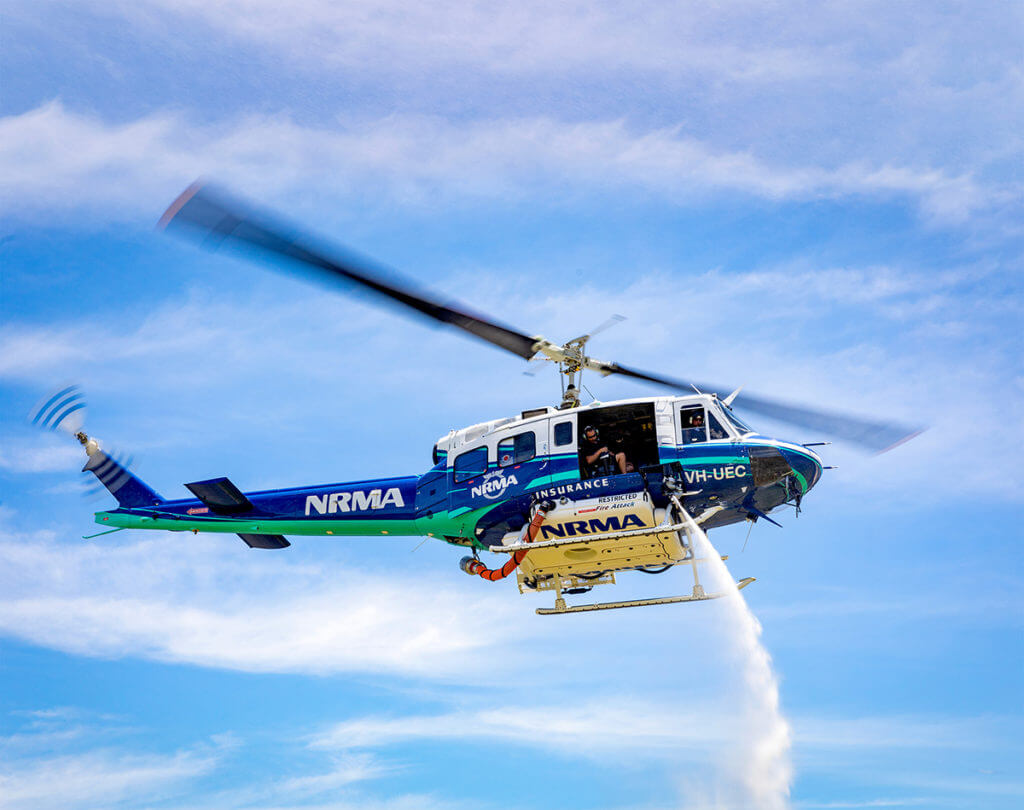
The “Asset Protection” aircraft is an Eagle Single — a single-engine Bell 212 powered by a Honeywell T53-17B — that was then customized by Eagle Australasia to be able to spray Thermo-Gel fire retardant with extreme accuracy at up to 230 feet (70 meters).
The project was the brainchild of Geoff Sprod, chief pilot and general manager of Sydney-based operator EPS Helicopter Services, and was brought to fruition through a partnership with NRMA Insurance.
The Asset Protection Eagle Single allows a person seated in the rear of the aircraft to spray the fire retardant gel at an appropriate ratio to water through a fire monitor — the type of nozzle that is commonly used by firefighters on the ground to shoot jets of water at a fire. The system includes the fire monitor housed on a Meeker Aviation mount, a 1,400-liter Simplex belly tank, a modified DART basket that contains a 170-psi diesel pump, and a standard 90-gallon auxiliary fuel tank converted to house the Thermo-Gel. Excluding the belly tank, the system weighs about 300 pounds.
Sprod told Vertical he originally had the idea to create a helicopter specifically designed for asset protection a decade ago, but due to the complexity of the technical challenges that needed to be overcome, it was only over the last two or three years that he seriously explored developing the idea. Once he had a proof of concept utilizing EPS’s Airbus AS350, NRMA joined the project as a partner, and Eagle Australasia set to work making the system a reality on an Eagle Single.

“We needed an aircraft that had reasonable payload,” said Sprod. “But I was mindful that going for a big twin[-engine aircraft] really wouldn’t work with the [aircraft’s] rotorwash. So, after talking with Grant [Boyter] and the team there at Eagle, they certainly have excellent product knowledge on the Bell mediums, and that instilled a lot of confidence in me with moving forward with the Eagle Single and that they were equipped to develop my idea into reality for me.”
According to Grant Boyter, director of Eagle Australasia, Sprod arrived with a concept for the system and requirements that included the ability to shoot the gel at a two percent ratio of gel to water, and fire it 165 feet (50 meters).
While Eagle Australasia had experience both in performing firefighting operations and outfitting aircraft for firefighting, developing a system that was capable of shooting retardant from a fire monitor was a step into the unknown.
All told, the system took about six months to create and certify, said Boyter — a process that was made easier by using many pieces that had already received supplemental type certificates.
The system works by feeding the water from the back of the belly tank through the diesel pump, which pushes it forward to the fire monitor. The gel is then added through a special connection just before the tip of the monitor.
The person controlling the monitor sits on a converted aeromedical seat in the aircraft’s cabin. To their left is a control panel that allows them to turn the diesel pump on and off (as required by Australian aviation regulations), and adjust the ratio of gel to water and the pressure of the system. To their right is joystick that moves the monitor. Eagle added stops to the monitor to restrict its movement so that it can only fire within a certain radius of direction away from the aircraft. In operation, the pilot holds a hover while the person applying the gel moves the monitor to spray up and down the asset they’re protecting.
The system also required the modification of the aircraft’s right hand cargo door, which remains open during applications. The forward part of the door normally remains in place as the larger rear portion slides backwards, but this setup impaired the vision of the monitor operator. The modification allows the entire door to be moved backwards.
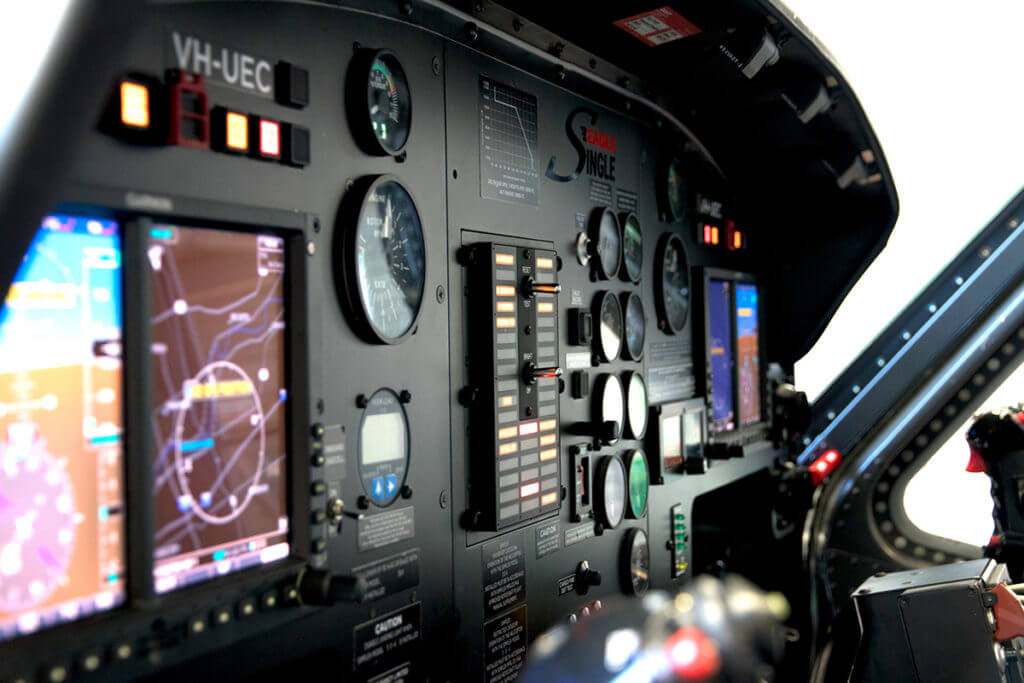
New avionics were also installed, including Eagle’s Generation II Digital Audio System, which supports up to 32 control panels, 20 transceivers and 12 full headsets with no external audio matching required. It also has Garmin G500H, GTN750 and GTN635 navigation, communication and GPS systems, and an AEM MCP01-100N NVIS master caution panel. Finally, the aircraft is fitted with BLR Aerospace’s FastFin System.
The water in the spray system flows at a rate of about 350 liters a minute, giving about three to five minutes of spraying time, said Craig Swayne, manager of sales and support at Eagle Australasia, who was heavily involved in the project’s development.
“The ideal scenario was to be able to apply Thermo-Gel to two houses with one load, which we have achieved at the 350-liters-a-minute mark,” said Swayne. “And it’s ideal with the downwash, because the spray sprays it and gives you some direction, but the downwash just takes this Thermo-Gel and puts it everywhere — under the eaves, and in and around the windows. It just coats everything with the downwash’s assistance.”
He said the biggest challenge in developing the system was achieving the spraying distance Sprod required.
“The key to the whole system is definitely the tip that we came up with and the means of which it injects the gel into the stream of water causing the least bit of turbulence,” he said. “Turbulence in the stream effects the distance.”
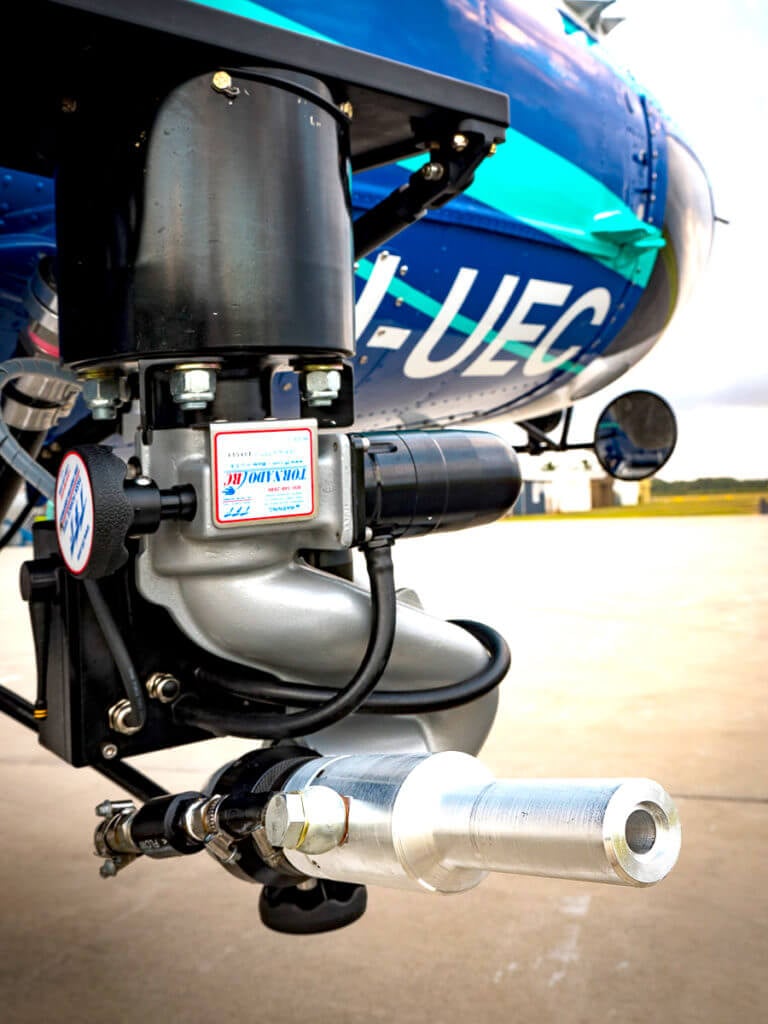
Entering Operation
Sprod, who owns patents for the system in Australia, the U.S., and Canada, said he has been extremely impressed with the performance of the Eagle Single and the support from Eagle Australasia so far.
“What the Eagle Single can lift and how it performs, it’s just fantastic,” he said. “It is just the perfect platform for this capability. And I can’t speak highly enough of Grant’s team at [Eagle Australasia]. The workmanship on that aircraft is just superb. Both EPS and NRMA are very happy with the final delivered aircraft, and also the support that we’ve received since then.”
The Asset Protection Eagle Single is currently capable of shooting the gel about 165 feet, but Sprod and Eagle believe further enhancements to the pump and monitor could increase that to as far as 275 feet.
How accurate is the system?
“We can get it through the window of a car,” said Sprod. “It is absolutely precise.”
The current Southern Hemisphere fire season represents the first time the aircraft has been used for asset protection by the Rural Fire Service (RFS). Having trialed shooting a different products through the fire monitor last year, the RFS has settled on using Thermo-Gel.
“The system is really at its peak shooting gel,” said Sprod.
The product used in the system is Thermo-Gel 300, which is fully biodegradable. Approved by fire agencies in Australia, the U.S., and Canada, among others, the gel is designed to be sprayed either directly onto an asset — such as a (non-live) powerline pole or a house — or applied in containment lines around assets. Once sprayed, it will last up to seven hours.
According to Sprod, the aircraft is treated like any other asset available to the RFS during fire seasons.
“We can perform direct attack, we can perform every role or function that all the existing water bombing and aircraft do, and then we also have the ability to protect assets,” he said.
Sprod said the feedback from the RFS has been good so far.
“We haven’t sprayed it directly onto any assets on a fire at this stage,” he said. “We were recently deployed on the Snowy Mountains and we were performing direct application onto the fire edge. We were also dispatched to protect some main supply power lines. They did want us to spray the powerlines to protect them from radiant heat, but unfortunately they couldn’t get confirmation from the utility provider that the powerlines had been de-energized.”
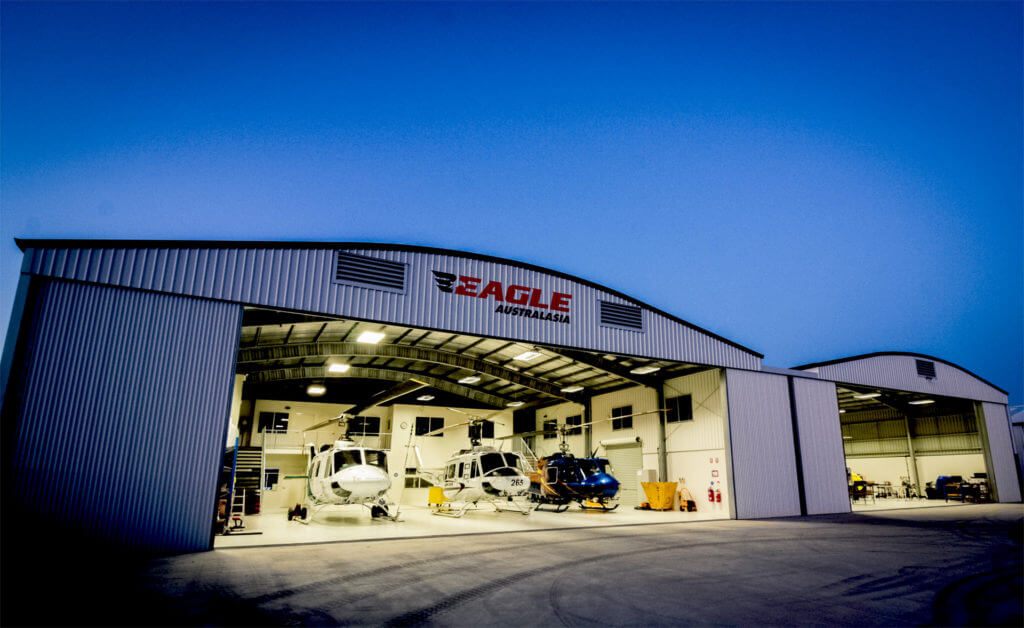
The novelty of the system and the approach meant that its use has also required a degree of education for those working below.
“For people on the ground, it’s all a bit foreign,” said Sprod. “On the handful of fires it’s been on, people have been getting used to it, what it can do and how it performs. So I think the first few seasons is really going to be just getting it out there and exposing it to people and displaying what it can and can’t do.”
That learning curve extends to those most intimately involved in the project, as they develop the best uses and most effective application of the aircraft and system.
“We’ve only had around 20 to 25 days on fires this season, and we’ve learned a lot,” said Sprod. “The more time we spend on the fire ground, the more we use, refine it and fine tune the system, the more likely we’ll be able to achieve the maximum out of it.”
Eagle’s Swayne said the system will really prove its worth once its has the opportunity to be deployed in an asset protecting role.
“Once Geoff is provided with the opportunity to prove the system everyone will see its value, I think he’s really got something,” he said. “You look at places like California where you loose extremely high value assets in densely populated areas like LA overrun by wild fires every year, I think there’s some serious potential [for the Asset Protection system], once its provided with the opportunity to prove itself.”





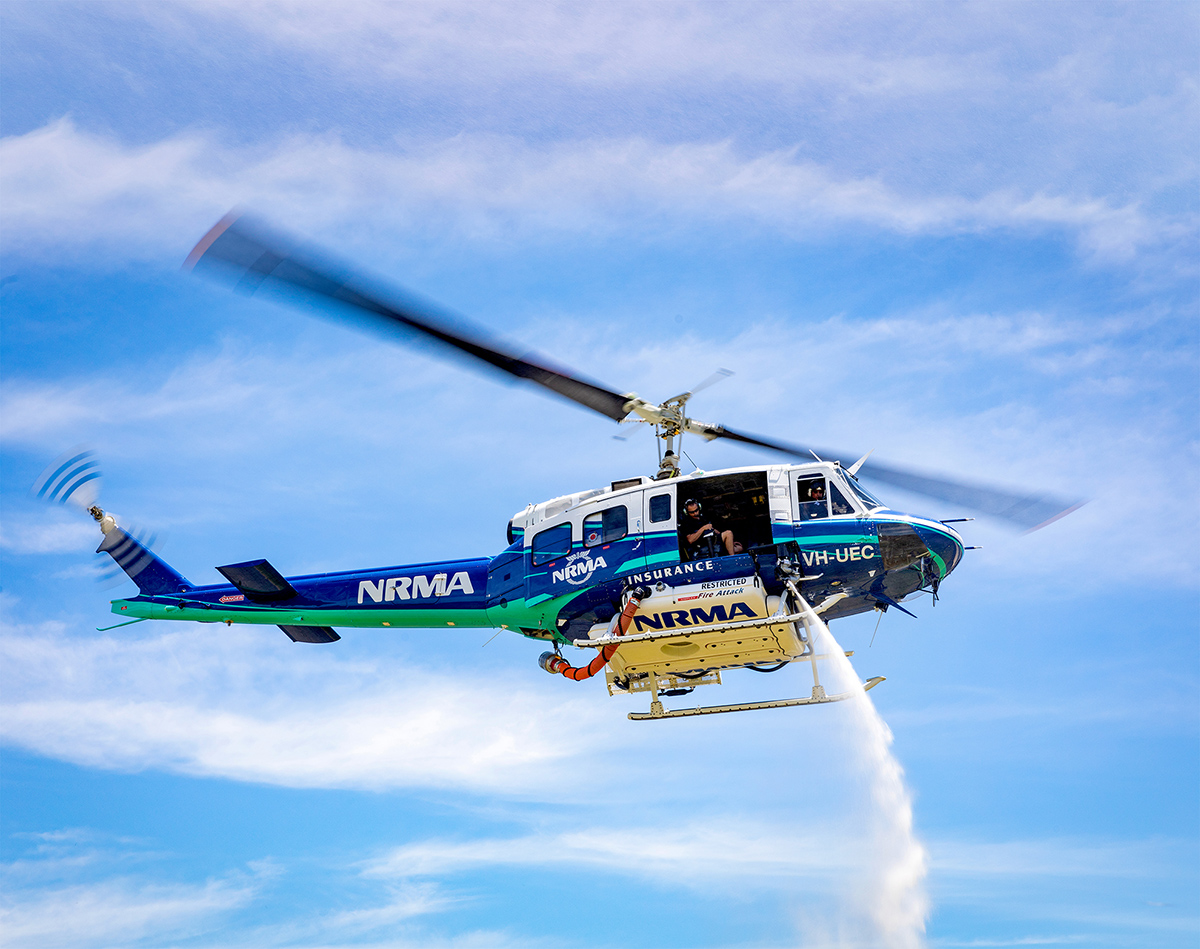




Great work guys
Seems like the best home insurance a person could buy.